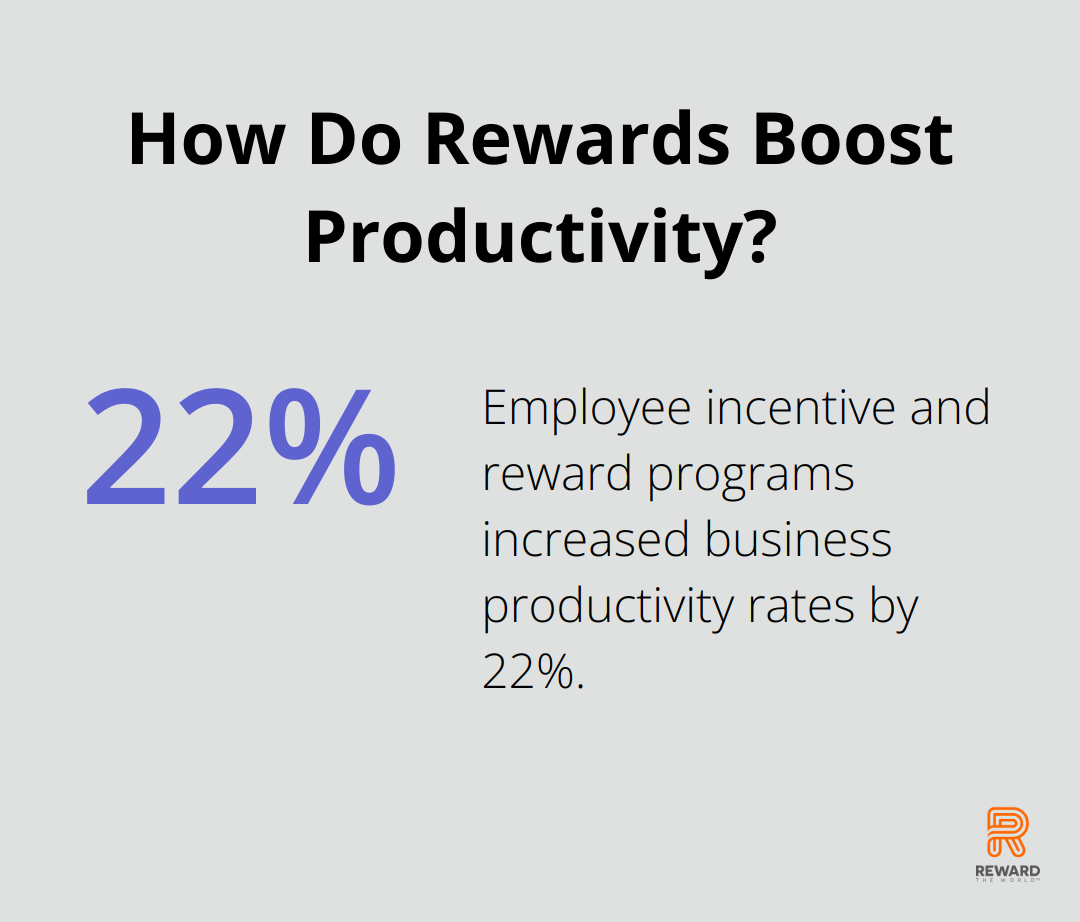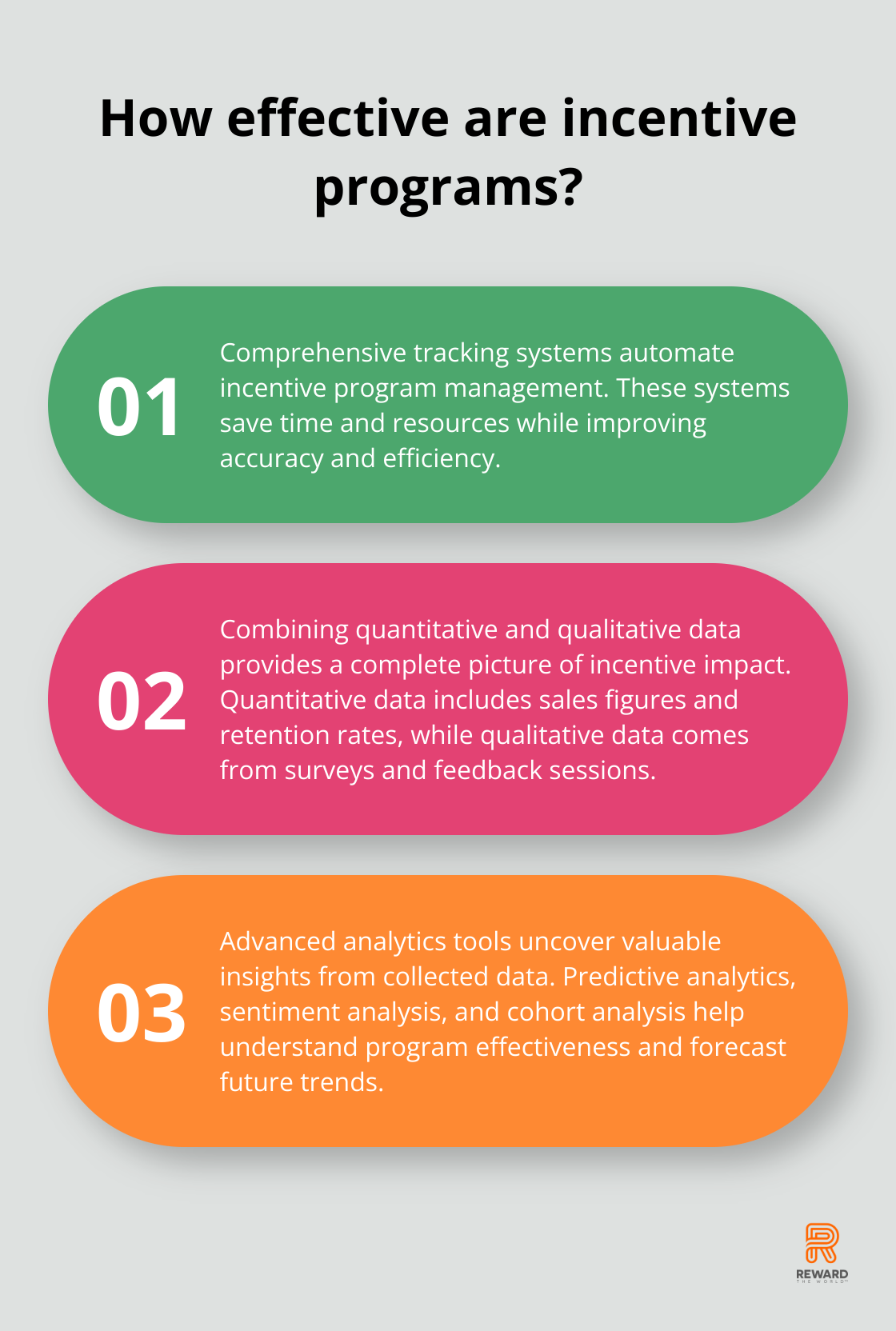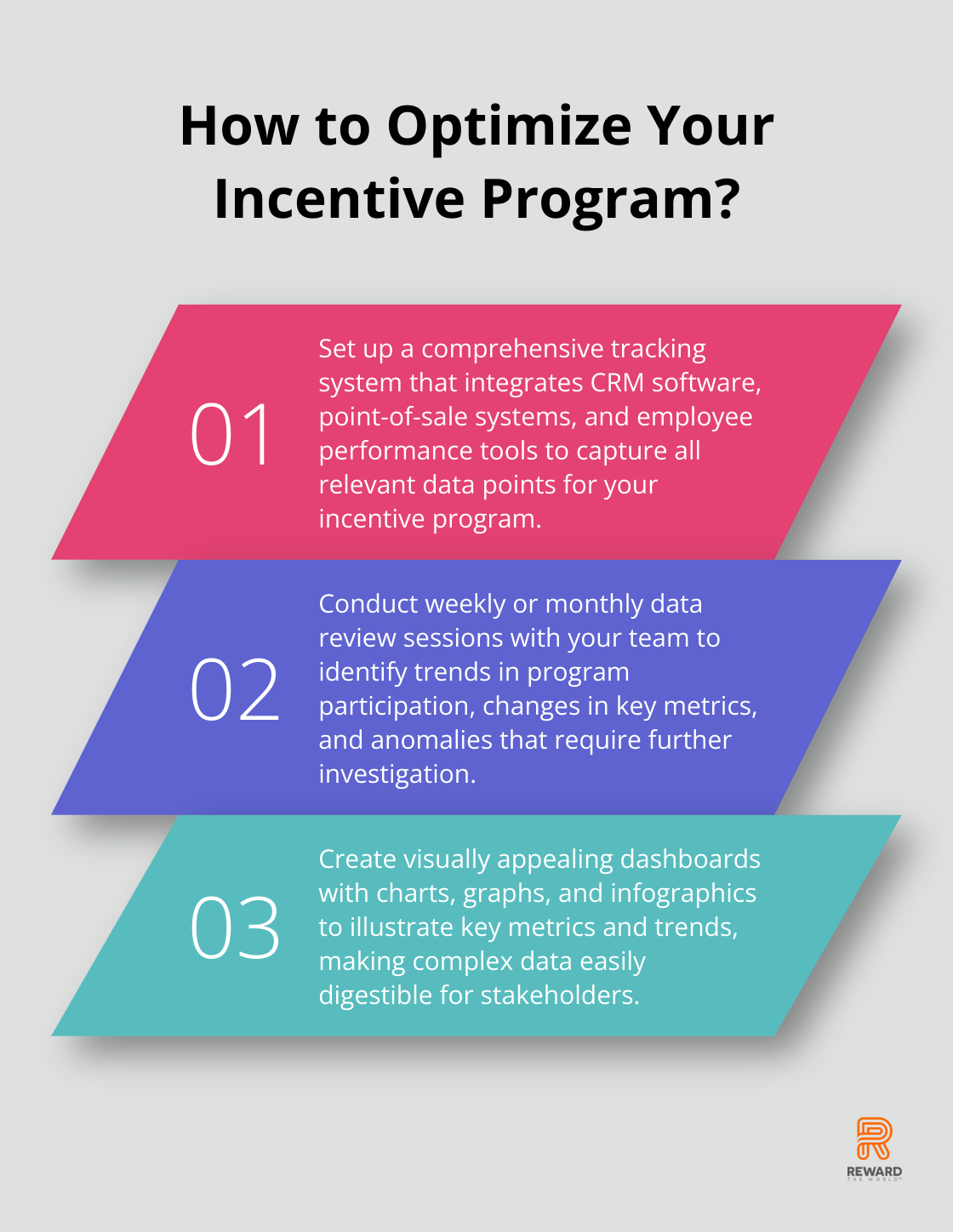
Proving the value of your incentive strategy to stakeholders is crucial for securing buy-in and continued support. At Reward the World, we understand the challenges of demonstrating loyalty program ROI effectively.
This blog post will guide you through the process of showcasing your incentive strategy’s impact, from setting clear objectives to presenting compelling results. By following these steps, you’ll be able to convince even the most skeptical stakeholders of your program’s worth.
How to Define Clear Objectives for Your Incentive Strategy
Align Your Incentive Strategy with Business Objectives
The first step in defining clear objectives for your incentive strategy involves aligning it with your company’s overarching business goals. Identify what your organization aims to achieve: increased customer retention, boosted sales, or improved employee productivity. Your incentive program should directly support these aims. For instance, if your goal is to enhance customer loyalty, focus your incentive program on rewarding repeat purchases or referrals.

A study by the Incentive Research Foundation highlights the importance of this alignment. Employee incentive and reward programs increased business productivity rates by 22%, underscoring the critical nature of connecting your incentive strategy to broader business aims.
Select Relevant Metrics for Measurement
After aligning your incentive strategy with business objectives, you must identify the right metrics to track progress. These Key Performance Indicators (KPIs) should directly relate to your goals and be easily measurable.
For employee incentive programs, focus on metrics such as:
- Employee NPS
- Turnover Rate
- Internal Promotion Rate
- Cost per Hire
Establish Realistic and Achievable Targets
With your KPIs in place, set specific, measurable targets. These targets should push for meaningful change while remaining achievable. Use historical data and industry benchmarks to inform your target-setting process.
For example, if your current customer retention rate is 70%, setting a target of 95% within a year might be unrealistic. However, aiming for a 5-10% improvement could present both a challenge and an attainable goal.
Set both short-term and long-term targets to track progress over time and make necessary adjustments to your strategy. Short-term incentive plans are usually annual plans that link awards based on meeting individual or group performance criteria and objectives, while long-term goals might span a longer period.
Customize Objectives for Different Stakeholders
Different stakeholders may have varying priorities and interests in your incentive strategy. Tailor your objectives and metrics to address the specific concerns of each group. For instance:
- For C-level executives: Focus on high-level metrics like ROI and overall business impact.
- For department managers: Emphasize team-specific KPIs and productivity improvements.
- For finance teams: Highlight cost-effectiveness and budget efficiency.
By customizing your objectives, you’ll increase buy-in across all levels of the organization and ensure that your incentive strategy addresses diverse stakeholder needs.
Now that you’ve defined clear objectives for your incentive strategy, the next step involves gathering and analyzing data to measure your progress effectively. This process will provide you with the insights needed to demonstrate the value of your incentive program to stakeholders.
How to Gather and Analyze Incentive Data Effectively
Implement Comprehensive Tracking Systems
Set up tracking systems that capture all relevant data points. This includes customer relationship management (CRM) software, point-of-sale systems, or employee performance tracking tools. Ensure these systems integrate seamlessly to provide a holistic view of your incentive program’s performance.
Comprehensive Tracking Systems can automate the management of incentive programs, saving time and resources while improving accuracy, transparency, and efficiency.
Combine Quantitative and Qualitative Data
Numbers are important, but they don’t tell the whole story. Complement your quantitative data with qualitative insights to get a complete picture of your incentive strategy’s impact.

Quantitative data includes:
- Sales figures
- Customer retention rates
- Employee productivity metrics
- Program participation rates
Collect qualitative data through:
- Customer satisfaction surveys
- Employee feedback sessions
- Social media sentiment analysis
- Focus groups
Aligning rewards with both qualitative and quantitative goals can foster motivated and efficient sales teams.
Leverage Advanced Analytics Tools
Make sense of your collected data with advanced analytics tools. These tools uncover valuable insights and trends that might not be immediately apparent.
Try using:
- Predictive analytics to forecast future trends based on historical data
- Sentiment analysis to gauge customer and employee satisfaction
- Cohort analysis to understand how different groups respond to your incentive program
Implementing clear objectives, ongoing measurement, and a structured approach to ROI can ensure your incentive programs drive real, measurable change.
Conduct Regular Data Reviews
Don’t wait until the end of your program to analyze your data. Regular reviews allow you to make real-time adjustments and demonstrate ongoing value to stakeholders.
Schedule weekly or monthly data review sessions with your team. During these sessions, look for:
- Trends in program participation
- Changes in key metrics (e.g., sales, customer retention)
- Anomalies or unexpected results that warrant further investigation
Consistent data reviews equip you to respond to challenges and capitalize on opportunities as they arise.
Benchmark Against Industry Standards
To truly understand the impact of your incentive strategy, benchmark your results against industry standards. This context helps stakeholders understand how your program performs relative to competitors and market norms.
With a solid foundation of data gathering and analysis in place, you’re now ready to present your results and demonstrate ROI to your stakeholders. The next section will guide you through effective methods to showcase your incentive strategy’s value in a compelling and persuasive manner.
How to Present Your Incentive Strategy Results
Create Compelling Data Visualizations
Transform complex data into easily digestible visuals. Use charts, graphs, and infographics to illustrate key metrics and trends. A line graph can effectively show the increase in customer retention rates over time, while a pie chart can display the distribution of rewards redeemed.
Visual aids have been shown to increase the persuasiveness of presentations by 43%. Create visually appealing dashboards that highlight your most important KPIs at a glance.
Highlight Key Achievements and Improvements
Focus on your most significant wins and improvements. Did your employee engagement score increase by 15%? Did customer lifetime value grow by 20%? These numbers will grab stakeholders’ attention.

Don’t just present raw data – contextualize it. If your sales increased by $500,000, calculate what percentage of overall revenue growth that represents. This approach helps stakeholders understand the true impact of your incentive strategy.
Benchmark Against Industry Standards
Compare your results to industry benchmarks to provide context. If the average customer retention rate in your industry is 70%, and your program has pushed yours to 85%, that’s a compelling story to tell.
The Incentive Research Foundation reports that incentive, recognition, and reward programs are expected to have broader reach and deeper impact in the decentralized workforce. Use such industry data to demonstrate how your strategy aligns with best practices.
Tell a Story with Your Data
Weave your data into a narrative that resonates with your audience. Start with the challenge your incentive strategy aimed to address, explain the approach you took, and then reveal the results. This storytelling approach makes your presentation more engaging and memorable.
For instance, you might say: “Six months ago, our employee turnover rate was high, costing us significantly. After implementing our new recognition program, we’ve seen a notable decrease in turnover, resulting in substantial cost savings.”
Tailor Your Presentation to Different Stakeholders
Different stakeholders care about different metrics. C-suite executives might be most interested in overall ROI, while department heads might focus on team-specific improvements. Customize your presentation for each audience to ensure maximum impact.
For financial stakeholders, focus on cost savings and revenue increases. For HR, highlight improvements in employee satisfaction and retention. For marketing, showcase increases in customer loyalty and brand advocacy (which can lead to increased word-of-mouth referrals).
Final Thoughts
Proving the value of your incentive strategy to stakeholders requires careful planning, thorough data analysis, and effective presentation. You must define clear objectives aligned with business goals, implement robust tracking systems, and leverage advanced analytics tools to gather compelling evidence of your program’s impact. Present this data through engaging visualizations and tailored narratives to help stakeholders understand the true value of your incentive strategy.

Demonstrating loyalty program ROI is an ongoing process. You should continuously monitor your program’s performance, make data-driven adjustments, and keep stakeholders informed of progress. This approach proves the current value of your incentive strategy and builds confidence in future initiatives.
At Reward the World, we understand the importance of proving incentive program value. Our global incentives platform offers analytics and integration, making it easier to track, analyze, and present your program’s performance. With our solution, you can elevate customer engagement, boost employee recognition, and demonstrate tangible results to your stakeholders.
